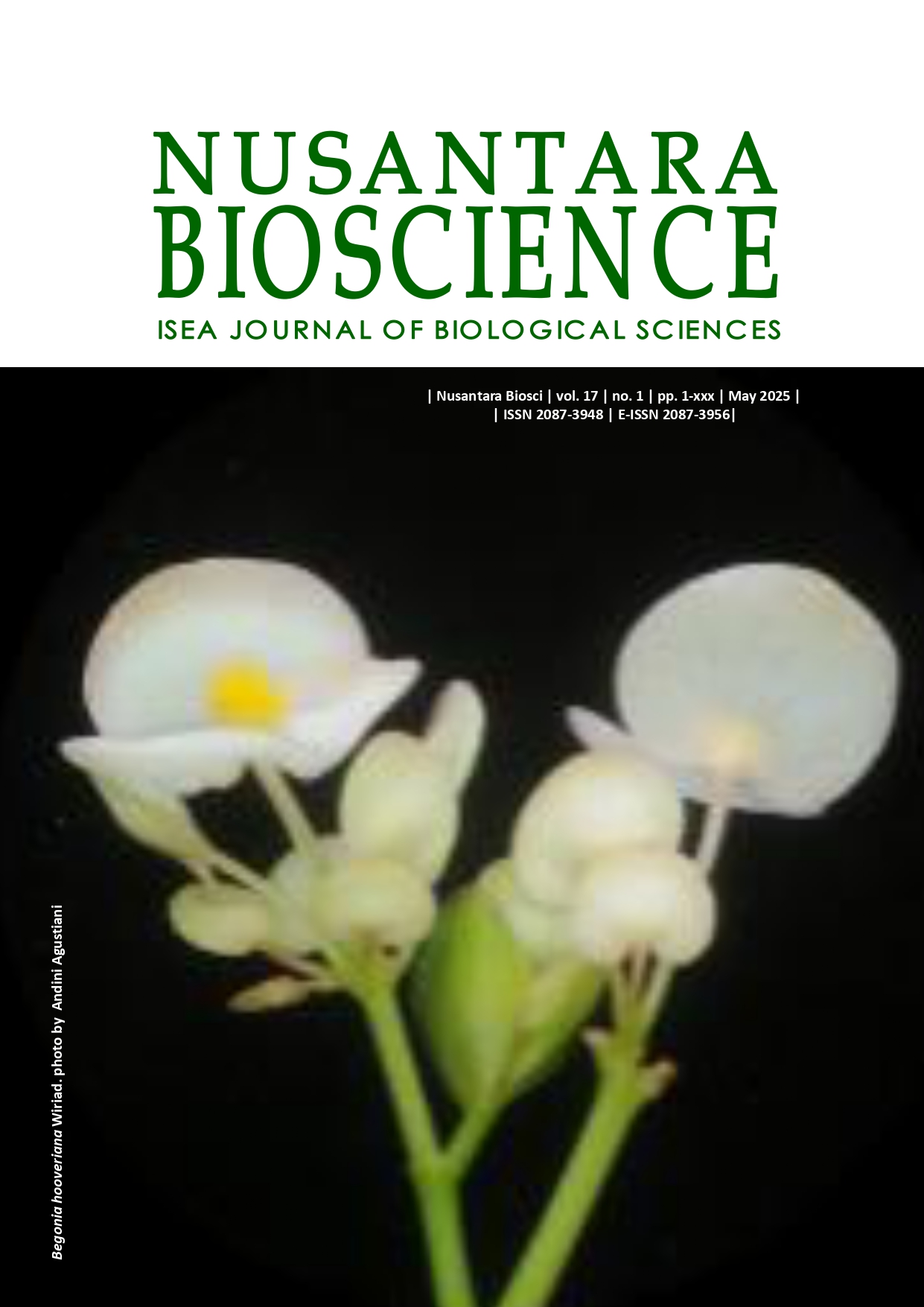Morphological and flowering phenology characterization of wild Begonia (B. hooveriana and B. hijauvenia) collected at Bogor Botanic Gardens, Indonesia
##plugins.themes.bootstrap3.article.main##
Abstract
Abstract. Agustiani A, Garvita RV, Siregar HM, Windarsih G. 2025. Morphological and flowering phenology characterization of wild Begonia (B. hooveriana and B. hijauvenia) collected at Bogor Botanic Gardens, Indonesia. Nusantara Bioscience 17: 1-10. Begonia hooveriana and B. hijauvenia are known for their varied morphology. This study aimed to describe the morphological characteristics of three Begonia accessions and determine their flowering phenology and pollen viability B. hooveriana with green and red color and B. hijauvenia. The Begonia were compared to characterize the plants, stomata on the underside of the leaves were examined, flowering phenology was observed daily during the flowering phase, and pollen viability was observed at the anthesis and post-anthesis phases. Data were recorded and analyzed descriptively. Based on morphological characterization data, the only morphology that distinguishes the two accessions of B. hooveriana is the color. The most prominent difference between B. hijauvenia and the previous two comparators is the type of plant. Accession B. hooveriana has anisocytic stomata, while B. hijauvenia has parasitic stomata. Based on the results of flowering phenology, the two accessions of B. hooveriana have a flowering period of 10-21 days, and B. hijauvenia has a flowering period of 17 days. The highest percentage of pollen viability in both flowering phases was found in B. hooveriana red (anthesis: 96.60±4.08%, post-anthesis:96.30±4.46%). The varied morphological characteristics of these three plants can be used as a basis for plant breeding programs.
2019-01-01

